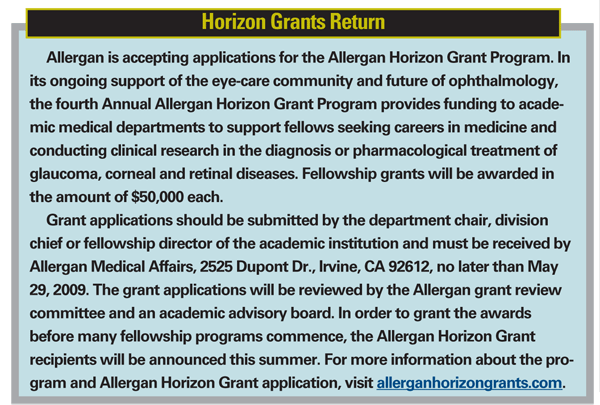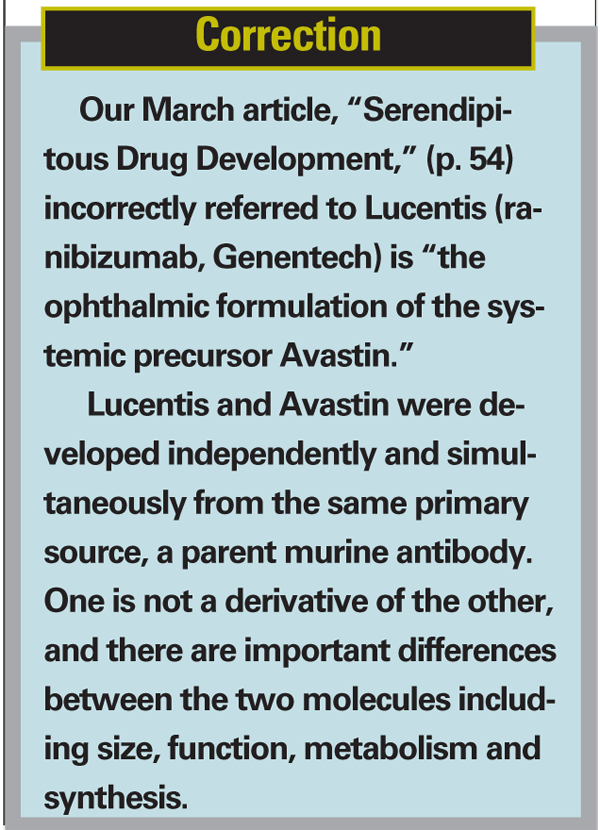Sirion Therapeutics announced positive results from a planned interim analysis of its Phase II trial evaluating fenretinide for the treatment of geographic atrophy associated with age-related macular degeneration. This interim analysis was triggered when all patients had reached the 12-month visit.
The analysis compared the growth rate of GA lesions, as measured by retinal photography, in patients treated with daily doses of placebo or 100 mg or 300 mg of oral fenretinide. The data showed slower growth of the GA lesions for the 300 mg dose for all lesion sizes at entry. This trend was evident as early as six months and increased over time. Among the sub-population of 78 patients who reached the 18-month study visit, the median growth rate of the lesions in the 300-mg group was 22.7 percent versus 41.6 percent in the placebo group, representing a 45-percent reduction in median lesion growth rate at month 18. The current study is powered to detect a 50-percent reduction in lesion growth rate at 24 months.
Slower lesion growth was also observed in the 100-mg group among subjects who had lesions smaller than the median baseline at entry (approximately three disk areas). This suggests that early intervention may improve outcomes.
Based on the interim analysis, Sirion plans to continue the current study to its conclusion. Sirion will meet with its scientific advisors and the Food and Drug Administration to design an appropriate Phase III program for fenretinide. The FDA has granted fast track designation for fenretinide for the treatment of geographic atrophy associated with age-related macular degeneration.

In another issue involving AMD, the FDA's Ophthalmic Devices Advisory Panel last month unanimously recommended that the agency approve, with conditions, the premarket application for VisionCare Ophthalmic Technologies' implantable telescope for end-stage AMD.
The investigational Implantable Miniature Telescope is designed to be a solution for moderate to profound vision loss due to advanced, end-stage forms of AMD that have no current surgical or medical treatment options. Smaller than a pea, the telescope prosthetic device is implanted in one eye in an outpatient surgical procedure. In the implanted eye, the device renders enlarged central vision images over a wide area of the retina to improve central vision, while the non-operated eye provides peripheral vision for mobility and orientation.
TGF-beta Aids Health of Retinal Blood Vessels
Scientists at Schepens Eye Research Institute have found that the growth factor known as TGF-beta is essential to the health of blood vessels in the retina and that blocking it can cause retinal dysfunction. These findings, published in the April 2 issue of PLoS ONE, may have an important impact on the prevention and treatment of diseases such as diabetic retinopathy and macular degeneration.
"These results are significant because they add to our understanding of the molecules that help to maintain blood vessels in a healthy state," says Patricia D'Amore, PhD, senior scientist at Schepens and principal investigator of the study, who adds that this information may be useful in understanding the changes that occur in the retinal microvasculature prior to the development of proliferative diabetic retinopathy.
"Insight into the role of this growth factor may also help clinicians monitor the use of systemic drugs targeting TGF-beta, which is elevated in a number of conditions (such as cancer and fibrotic diseases) to limit any vision problems that might occur as a side effect," adds Tony Walshe, PhD, the first author of the study and a postdoctoral fellow in Dr. D'Amore's laboratory.
Capillaries are the smallest blood vessels in the body and the site at which oxygen and nutrients are transferred from the blood to the tissues. A capillary is composed of an endothelial cell, which forms the lining of the small tube, and a pericyte, which wraps around the outside of the tube. Scientists have long believed that communication between these two cell types is necessary to maintain blood vessel structure and function.
The goal of the PLoS ONE study, says Dr. Walshe, was to determine if TGF-beta plays a role in keeping blood vessels functioning normally. In previous experiments using tissue cultures, Dr. D'Amore's lab had identified TGF-beta as a protein that results from the communication between the two cell types and which they use to maintain the health of the small blood vessels. In the current study, the team wanted to confirm that finding in animals.
To do that, they injected mice with a virus that produces large quantities of soluble endoglin, a protein that would circulate and then bind to and inhibit TGF-beta. When they examined the retinas of treated mice, the team found clear evidence that retinal blood vessels were losing their integrity—blood was not moving efficiently through the smaller vessels into the retina tissue, and fluid was leaking out of the vessels, which does not happen when the vessels are functioning properly. These defects led to the death of ganglion cells and a loss of visual function.
Future studies will explore what other molecules are involved in maintaining healthy blood vessels and how these relate to the development of microvascular diseases.

Study: Success in Treating a Rare Retinal Disorder
Patients with autoimmune retinopathy saw their vision improve after treatment with drugs to suppress their immune systems, say researchers at the University of Michigan Kellogg Eye Center. Because AIR is difficult to diagnose, the big challenge now is to find biologic markers that identify patients who can benefit from treatment.
The study, reported in the April Archives of Ophthalmology, is the largest review of AIR cases to date. In 30 patients with AIR, 21 individuals showed improvement after treatment with immunosuppression therapy. Improvement was defined by several measures, including the ability to read a minimum of two additional lines on the standard eye chart or expansion of at least 25 percent in visual field size.
"The results challenge the commonly held belief that autoimmune retinopathy is untreatable," says John R. Heckenlively, MD, author of the report . In this disease, antibodies attack the retina, resulting in progressive vision loss and eventual blindness.
AIR is like other autoimmune diseases in which the immune system begins to attack healthy tissue. The patients in the current study were treated with various combinations of immunosuppression medications to counteract the unwanted autoantibodies from the immune system.
"It is not easy to identify patients with AIR because the clinical symptoms are very similar to other diseases involving retinal degeneration," says Dr. Heckenlively.
Typically these patients are diagnosed as having retinitis pigmentosa. "When someone asks how to distinguish one group from the other," he says, the answer often is "with difficulty. We do not yet have a single test to confirm a diagnosis of AIR. However most patients have characteristic symptoms and findings, as well as subtle abnormalities on electrophysiologic testing. All patients have anti-retinal antibodies on blood testing, but that finding alone is not diagnostic. The majority of cases have other family members with autoimmune disorders. A clear diagnosis of AIR relies on carefully weighing all these factors," he concludes.
Dr. Heckenlively says that few reports on AIR treatment are available in scientific publications, due largely to the difficulty in diagnosis. Many patients may also undertreated because the lack of good markers to evaluate treatment effects. "Now that we have evidence that immunosuppressant therapies work, we need further studies to evaluate which medications will be effective in treating autoimmune retinopathy," says Dr. Heckenlively.



